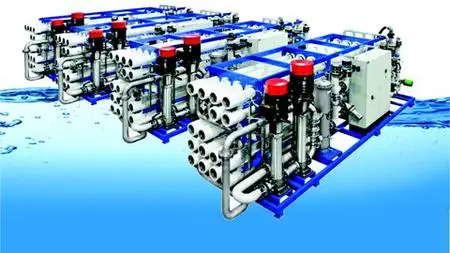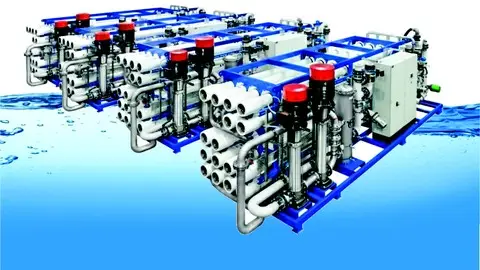Membrane Technology For Water And Wastewater Treatment
Last updated 8/2020
MP4 | Video: h264, 1280x720 | Audio: AAC, 44.1 KHz
Language: English | Size: 2.94 GB | Duration: 6h 33m
Last updated 8/2020
MP4 | Video: h264, 1280x720 | Audio: AAC, 44.1 KHz
Language: English | Size: 2.94 GB | Duration: 6h 33m
To learn how to select and design an appropriate membrane process (MF, UF, NF, RO) theoretically and with ROSA software
What you'll learn
This course includes 230 slides in 8 sections and 20 lectures (more than 6 hours) and also along with a practical tutorial using ROSA software. These sections:
Section 1: Membrane basic principles and selection process
Section 2: Fouling, Scaling, Concentration Polarization, and solutions
Section 3: Pretreatment and post-treatment
Section 4: Designing a membrane system and evaluation (e.g. RO/NF) for water and wastewater treatment theoretically (step by step)
Section 5: Water production using RO/NF membrane (cost and capacity)
Section 6: Case study: Drinking water treatment using Nanofiltration (NF)
Section 7: ROSA software tutorial and Reverse Osmosis (RO) process design using this software
Section 8: Introducing top membrane manufacturers and productions
Requirements
A basic knowledge of water and wastewater treatment
Description
This course includes 230 slides in 8 sections and 20 lectures (more than 6:00 hours) and also along with a practical tutorial using ROSA software. These sections are as follow:Section 1: Membrane basic principles and selection processSection 2: Fouling, Scaling, Concentration Polarization, and solutionsSection 3: Pretreatment and post-treatmentSection 4: Membrane design and evaluationSection 5: Water production using RO/NF membrane (cost and capacity)Section 6: Case study: Drinking water treatment using Nanofiltration (NF)Section 7: ROSA software tutorial and Reverse Osmosis (RO) process design using this softwareSection 8: Introducing top membrane manufacturers
Overview
Section 1: Membrane basic principles and selection process
Lecture 1 Introducing, content, and references
Lecture 2 Lecture 2: Introduction to membrane process
Lecture 3 Determination of the necessary molecular separation size of the membrane
Lecture 4 Lecture 4: Determination of the membrane material
Lecture 5 Lecture 5: Decision on the module type
Lecture 6 Lecture 6: Decision of the process
Section 2: Fouling, Scaling, Concentration Polarization, and solutions
Lecture 7 Fouling and scaling (types, factors, analysis)
Lecture 8 Concentration polarization and resistances, fouling/scaling minimization methods
Section 3: Pretreatment and post-treatment
Lecture 9 Types of pretreatment, Control of critical substances/parameters
Lecture 10 Post-treatment for membrane processes, Exercise (pretreatment process selection)
Section 4: Membrane design and evaluation (RO/NF design in 10 steps)
Lecture 11 General concepts before the design
Lecture 12 Reverse Osmosis system design in 10 steps
Lecture 13 Evaluation of Reverse Osmosis (RO) Systems
Lecture 14 Energy and Sustainability Considerations
Section 5: Water production using RO/NF membrane (cost and capacity)
Lecture 15 Water production using RO/NF membrane (cost and capacity)
Section 6: Case study: Drinking water treatment using Nanofiltration (NF)
Lecture 16 Case study: Drinking water treatment with nanofiltration
Section 7: ROSA software tutorial and Reverse Osmosis (RO) process design using ROSA
Lecture 17 ROSA software tutorial, guidelines and standards
Lecture 18 Designing a RO system for brackish surface water using ROSA software
Lecture 19 Designing a RO system for seawater desalination using ROSA software
Section 8: Introducing top membrane manufacturers and productions
Lecture 20 Introducing top membrane manufacturers and productions
Chemical engineering,Environmental engineering,Process engineering,Mechanical engineering,Civil engineering,Hydro science and engineering



